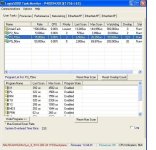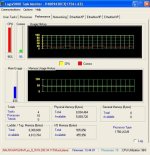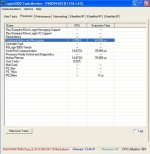I have an application with two Contrologix controllers in the same rack. One is setup just as a continous loop. The other one with 3 timed intervals (5ms, 15ms, 50ms) and a continous loop. There are 28 axis between the two processors and I know CPU load goes up and scan times slow down dramatically during production. The integrator that setup the system has things chugging along so that the CPU utilization is around 95%+ all the time according to the monitor system. I have seen it at 96% and it turns red in the system monitor. We also sometimes get watchdog errors (it appears its not set too tight).
Previously all my coding had been done with continuous loop, thus the time slice concepts are new to me. I have attached a screen shot of things.
Having some difficulty tracking some of this down online and the help menus. We are having some issues with very slow response times with some AB Panelviews (over ethernet) with 3-5sec delay and sometimes intermittent position problems. We are thinking it may be due to missing some things the way the PLC logic is scanning. The integrator has tried all they seem to know to do.
To sum it up I have three questions for now:
1. Any clues to know if this is a time slice issue?
2. What is the overlap column telling me in the screenshot?
3. Any tips on how to learn more about how to optimize things?
THANKS!

Previously all my coding had been done with continuous loop, thus the time slice concepts are new to me. I have attached a screen shot of things.
Having some difficulty tracking some of this down online and the help menus. We are having some issues with very slow response times with some AB Panelviews (over ethernet) with 3-5sec delay and sometimes intermittent position problems. We are thinking it may be due to missing some things the way the PLC logic is scanning. The integrator has tried all they seem to know to do.
To sum it up I have three questions for now:
1. Any clues to know if this is a time slice issue?
2. What is the overlap column telling me in the screenshot?
3. Any tips on how to learn more about how to optimize things?
THANKS!

Last edited:





